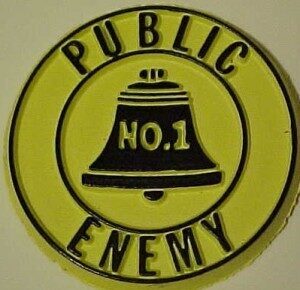I was once highly disappointed by a dessert, to such an extent that it’s become a metaphor for anything bad that happens to me.
I was in a restaurant with my best friend Melinda when, hearing the sound of our waiter and smelling chocolate, I smiled in anticipation of the flourless chocolate dome, expecting it to be, well, bigger than a freaking truffle. It was tiny. Tiny is being NICE. It was a dinky, dinky thing, just big enough to piss me off. Had I known in advance what I was getting, I’d not have been so pouty. Setting expectations is critical when you’re doing anything. Had the waiter said “well nice choice but beware of its teeny nature” then I’d have either chosen something else, or I’d have not whimpered aloud when it was put down in front of me.
Managing expectations is very difficult at times, as when we’re trying to sell something, we sometimes exaggerate our anticipated results in order to close the deal. If things don’t go as planned, this can lead to a great deal of frustration.
To illustrate, here’s Jane looking disappointed.
Here’s Jane looking happy. I almost said satisfied but sadly, you’re all a bunch of perverts.
You want your client to make the happy Jane face.
How do you do this? Well, as cliched as it sounds, I like to underpromise and overdeliver. We don’t always overdeliver of course, depending upon the collective emotional state of my link builders, but I can assure you that I always, always underpromise. A DBA that I worked with years ago once joked that we’d be the two worst salespeople in the entire world, as we’d both be saying “you know? you really don’t need this. The price is just stupid and honestly, you’re fine without it. Sorry to have wasted your time.” Now, I think that everyone needs link building of course…but I never make any promises about the effectiveness of what we do, as it’s always something that is determined by many factors out of my control, such as budget, client’s site, client’s willingness to listen to SEO advice and make appropriate changes, history of the site, willingness of people in the niche to link, etc.
Google’s Toolbar PageRank (TBPR) has become the absolute number one enemy of mine lately, if you don’t count the people who try to get out of paying me. It seems to be the only metric that clients really view as important. After bitching loads about this to the lovely ginger SEOIdiot, I quickly realized that it’s actually all my fault. In this way, Paul resembles my mother, but with better hair.
Anyway, he pointed out that it’s critical to set the value for the client, before doing the work. Pretty simple concept really, but I was so sure that by underpromising and refusing to guarantee results, I had it all covered. He learnt me good.
So, if I gently yet emphatically explain to my clients beforehand that TBPR is really a load of crap, maybe when they get their reports at the end of the month, they won’t all fuss about why we got them some PR 0 and 1 links, right? Riggghhht.
As I learned from all this, I wasn’t quite clear on my definition of value either. As the Director of Operations, I was so used to making sure we didn’t run under or over budget and that we didn’t get worthless links that I didn’t take the time to think about much else. TBPR is a very easy number and it makes it easy to price links if you’re those types of nasty people who buy them. If you can’t rely on that for value, what is there? Defining quality is always difficult. Getting a client to agree with my definition of quality is even more difficult. (see my quality link may not be your quality link) Documenting quality on a client report is, like, fifteen hundred billion times as difficult. So what can you do?
Figure out what you want to get out of marketing, first of all. More traffic, higher rankings, more sales? The figure out a plan to make that happen. Throw away the idea of TBPR representing value up front…god knows we’ve all seen some amazing sites with low or no TBBR and some truly ridiculous sites with high TBPR. Once you’ve been doing link building for awhile, you can just look at a page and tell if it’s going to be a good one to get a link on. You can look at some high TBPR sites that may send traffic to your client’s site, but it will almost all be worthless traffic, as the niches are totally irrelevant to each other.
Since I’m heeding the advice of gingers, Scott Cowley had an awesome post on client expectations that brings up another big Flourless Dome area when link building: quantity and quality of links. At Link Fish, we keep loads of stats and can easily find out what the average cost of a paid link is for a year for each of the niches we’ve worked with, but the fact remains that averages are subject to change. In the past year alone, we’ve seen that the cost of a paid link on a gambling site has gone way, way up. German gambling links in particular have gotten pricey. Thus, if you give us $5000 to spend on links, you may see 50 links, but you may see 25. Clients really, really hate it when they’re used to getting a set number of links in a month, and then that changes for whatever reason. We sometimes decide to tighten up our in-house standards (for the greater good), and clients sometimes decide to change their standards midway through a campaign, which always wrecks the quantity balance unless the budget is adjusted. The quality then becomes an issue because clients get tired of having to pay more money for fewer links, and they consider going elsewhere to get what they think are cheaper yet better quality links. Err on the side of caution: assume the client will change his or her mind about guidelines and that links will get more expensive, and state this up front.
This also applies to non-paid link building of course, perhaps even more so. When you’re not offering money, things can get a bit harder. If a client comes to you after dealing with a paid link campaign and now wants to go all whitehat, he or she may be very surprised at the low quantity of links that you can get for the same effort. I’ll admit that the quality of non-paid links can definitely be much better than that of paid links…but it can also be much worse. It’s probably a good idea to get a nice history of any backlinking work that’s gone on when you take on a new client so that you can adjust expectations accordingly.







